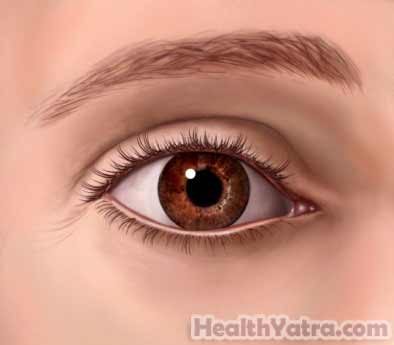Definition
Blepharoplasty is a procedure to remove excess skin and fat tissue from the eye area.

Reasons for Procedure
Blepharoplasty can correct:
- Drooping upper eyelids
- Excess skin of the lower eyelids
- Puffiness of the upper or lower eyelids
This procedure can also create upper eyelid folds.
Possible Complications
Complications are rare. But no procedure is completely free of risk. If you are planning to have blepharoplasty, your doctor will review a list of possible complications, which may include:
- Temporary blurred vision
- Temporary swelling and bruising of the eyelids
- Asymmetry in healing
- Scarring
- Difficulty closing eyes
- Dry eyes
- Red eye
- Decrease or loss of vision
- Reaction to anesthesia
- Infection
- Bleeding
- Distortion of upper or lower eyelid position
Factors that may increase the risk of complications include:
- Smoking
- Thyroid problems
- High blood pressure
- Poor circulation
- Diabetes
- Glaucoma
- Dry eyes or red eyes
- Anatomy of the eye and the surrounding bone
What to Expect
Prior to Procedure
Your doctor will likely do the following:
- Physical exam
- Vision tests
- Exam of the eyelid and supporting structures
Leading up to your procedure, your doctor may recommend that you:
- Follow a special diet.
- Take certain medicines.
- Arrange to have someone drive you home.
- Arrange for someone to help you at home.
Talk to your doctor about your medicines. You may be asked to stop taking some medicines up to one week before the procedure, like:
- Anti-inflammatory drugs
- Blood thinners
Anesthesia
You will be given a local anesthetic to numb the area around your eyes. Sedatives will be given to help you relax. In some cases, general anesthesia will be used. In this case, you will be asleep.
Description of the Procedure
Your doctor will make incisions in your eyelids. In the upper eyelid, the incision is usually made in the crease. In the lower eyelid, the incision is usually made just below the lashes or on the inside of the eyelid. The excess fat will be removed. The excess skin and muscle will be trimmed. The incision will be closed with sutures.
How Long Will It Take?
60 minutes or more depending on the amount of skin and fat to be removed
Will It Hurt?
Anesthesia will minimize pain during the procedure. You may feel some tightness and soreness after the procedure.
Post-procedure Care
At the Care Center
Your doctor will apply ointment. A bandage may be applied over your eyes.
At Home
When you return home, do the following to help ensure a smooth recovery:
- You will receive instructions about limiting your activity. You may also be advised to avoid alcohol and certain medicines.
- Your doctor will likely suggest that you keep your head elevated for several days.
- You can use cold compresses to reduce swelling and bruising.
- Your doctor will show you how to clean your eyes and may suggest using ointment.
- Ask your doctor about when it is safe to shower or bathe.
- You will be able to read and watch television after the procedure.
- You will not be able to wear contact lenses or participate in difficult activity. Ask your doctor when you can resume your normal activities.
- Your stitches will likely be removed in 5-7 days.
- Since you may be sensitive to sunlight, wind, and other irritants, your doctor may recommend sunglasses and a special sunblock for your eyelids.
After about six months, your scars will likely fade to a nearly invisible white line. The results of a blepharoplasty are permanent. Your doctor may still be able to do extra surgery as needed or desired. Sometimes, blepharoplasty is combined with another procedure called canthopexy. This is used to improve the shape and positioning of the lower eyelid. Blepharoplasty may also be done with ptosis repair. This is the repair of the upper eyelid muscle to correct drooping of the upper eyelid.
Call Your Doctor
After arriving home, contact your doctor if any of the following occurs:
- Signs of infection, including fever and chills
- Redness, swelling, increasing pain, bleeding, or discharge from the incision site
- Opening of any part of the incision
- Excessive pain or redness of the eye
- Any decrease or change in your vision
- Any other problem or concern
In case of an emergency, call for medical help right away.
